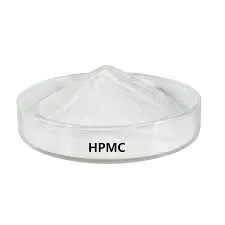
Nov . 05, 2024 03:03 Back to list
construction hpmc
The Role of HPMC in Construction A Comprehensive Overview
Hydroxypropyl Methylcellulose (HPMC) is a widely utilized cellulose ether in the construction industry, known for its unique properties and functionalities that enhance construction materials. The increasing demand for high-quality construction methods and materials has paved the way for the use of HPMC in various applications, including mortars, adhesives, and concrete. This article explores the significance of HPMC in construction, examining its properties, advantages, and diverse applications.
Understanding HPMC
HPMC is derived from natural cellulose and modified to enhance its characteristics for specific applications. It is a white, odorless powder that is soluble in water, forming a viscous gel. Its chemical structure allows for the modification of viscosity, solubility, and gel formation, making it a versatile additive in various construction products.
Properties of HPMC
The effectiveness of HPMC in construction can be attributed to several of its key properties
1. Thickening Agent HPMC acts as a thickening agent and can adjust the viscosity of construction materials. This property is particularly important in ensuring that mortars and adhesives maintain proper consistency during application.
2. Water Retention One of the most valuable characteristics of HPMC is its ability to retain water. This property is essential in preventing the rapid evaporation of water in cement-based materials, allowing for better curing and improved strength development.
3. Improved Workability HPMC enhances the workability of construction materials, making them easier to mix, apply, and spread. This property is particularly beneficial in plastering and tiling applications, where smooth application is crucial for achieving desired finishes.
4. Enhanced Adhesion The incorporation of HPMC in adhesives improves their bonding strengths. It enhances the interaction between different surfaces, providing durable adhesion that can withstand various environmental conditions.
5. Flexibility and Compatibility HPMC is compatible with various construction materials, including cement, lime, and gypsum. This compatibility allows for its incorporation into a range of products without compromising performance.
Advantages of Using HPMC in Construction
Implementing HPMC in construction brings several advantages that contribute to the overall efficiency and quality of building processes
construction hpmc

- Cost-Effectiveness Utilizing HPMC can lead to cost savings by reducing the amount of cement required due to its water-retaining properties, while also enhancing the overall performance of materials.
- Quality Improvement The use of HPMC aids in producing superior quality materials. It enhances the mechanical properties of mortars, plasters, and other building materials, resulting in a longer lifespan and better durability.
- Environmental Benefits As a cellulose-based product, HPMC is biodegradable and reduces the environmental impact of construction. Its use contributes to sustainable building practices by allowing for lower emissions in construction processes.
Applications of HPMC in Construction
HPMC is extensively used in various construction applications
1. Cement Mortars HPMC improves the workability and adhesion of cement mortars, making it ideal for bricklaying and rendering.
2. Tile Adhesives In tile adhesives, HPMC enhances bonding strength and provides additional flexibility, accommodating slight movements in substrates.
3. Gypsum Products HPMC is used in gypsum-based plasters, providing excellent water retention and improved surface quality.
4. Self-Leveling Compounds In self-leveling underlayment applications, HPMC contributes to the fluidity and flow of the compound, ensuring a smooth finish.
5. Repair Mortars HPMC is often utilized in repair mortars, where it aids in enhancing adhesion and workability, making the application process more efficient.
Conclusion
The integration of Hydroxypropyl Methylcellulose in the construction industry represents a significant advancement in material science. Its unique properties facilitate improved performance, durability, and sustainability in construction processes. As the industry continues to evolve, the use of HPMC is likely to expand, providing builders and manufacturers with an effective tool to meet modern construction demands. Understanding and utilizing HPMC can lead to enhanced construction quality and efficiency, ultimately benefiting the industry as a whole.
-
Versatile Hpmc Uses in Different Industries
NewsJun.19,2025
-
Redispersible Powder's Role in Enhancing Durability of Construction Products
NewsJun.19,2025
-
Hydroxyethyl Cellulose Applications Driving Green Industrial Processes
NewsJun.19,2025
-
Exploring Different Redispersible Polymer Powder
NewsJun.19,2025
-
Choosing the Right Mortar Bonding Agent
NewsJun.19,2025
-
Applications and Significance of China Hpmc in Modern Industries
NewsJun.19,2025







